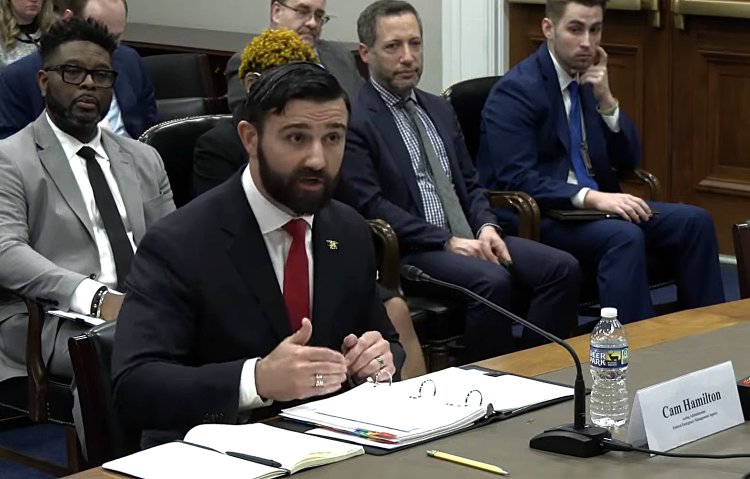Congress proposes major FEMA restructuring plan, countering Trump's stance
Both Republicans and Democrats are working to ensure that Congress has a role in shaping the future of the disaster agency.

This proposed legislation would allow FEMA to cover major repairs for homes affected by disasters, rather than limiting funding to temporary fixes. Additionally, the agency would have the authority to impose penalties on states that do not actively work to mitigate disaster risks, according to a detailed summary obtained by PMG’s E&E News.
A significant change included in the bill is the detachment of FEMA from the Department of Homeland Security, transforming it into an independent agency that reports directly to the president. This discussion draft was prepared by Sam Graves, the Republican chair of the House Transportation and Infrastructure Committee from Missouri, alongside Washington Rep. Rick Larsen, the top Democrat on the panel.
Committee staff members provided details about the legislation during a private virtual conference attended by around 100 experts, which was monitored by E&E News. Both committee Republicans and Democrats anticipate releasing the discussion draft publicly on Thursday.
“The administration has talked about finding a better way to support states taking the lead” in disaster response, remarked Johanna Hardy, a subcommittee Republican staff director, during the conference, adding that the draft legislation would help achieve these objectives.
Hardy also stated, “Making FEMA a Cabinet-level agency will better enable FEMA to support states and local governments.” This bill could serve as Congress's primary effort to shape the future of FEMA, particularly as Trump has begun making cuts aimed at weakening or dismantling the agency.
Manann Donoghoe, a senior research associate at Brookings Metro, described the committee's movement on this issue as “promising” during an interview following the virtual conference.
Opposition to Trump's proposed cuts—like the cancellation of a multibillion-dollar grant program designed to help states guard against natural disasters—has been widespread and bipartisan. Trump has also mentioned the possibility of abolishing or reducing FEMA while establishing an expert council to suggest changes.
On Wednesday, FEMA's acting Administrator Cameron Hamilton candidly expressed to a House Appropriations subcommittee that the agency should not be eliminated. “I do not believe it is in the best interests of the American people to eliminate the Federal Emergency Management Agency,” Hamilton stated in response to a question from Rosa DeLauro, the top Democrat on the House Appropriations Committee from Connecticut. “Having said that, I’m not in a position to make a decision. That is a conversation that should be had between the president of the United States and this governing body,” he added.
Earlier in the hearing, Hamilton explained that the administration is “looking at policies and initiatives that encourage greater state participation” in disaster recovery, countering Trump's insistence on minimizing FEMA's role and shifting more responsibilities to states.
Despite this, the House bill proposes to increase FEMA’s expenditures in some areas. According to the detailed summary and Transportation Committee staffers, it would eliminate limitations that restrict FEMA to funding only minor home repairs after a disaster, establishing a “permanent repair program of owner-occupied homes.” Lauren Gros, a Democratic committee staffer, noted during the conference, “It would expand FEMA’s authority to continue to repair homes … past the point of habitability,” questioning the rationale behind spending significant funds on temporary housing instead of investing in permanent solutions.
Under existing federal law, FEMA provides only a limited amount of assistance—typically a few thousand dollars—to make homes habitable after a disaster, which has necessitated long-term temporary housing for many uninsured households.
The bill would also encourage FEMA to prioritize damages in “economically distressed … or rural areas” when recommending disaster declarations to the president. Ultimately, presidents retain the final authority on declaring a “major disaster,” which allows states access to federal aid for recovery.
FEMA generally covers 75 percent of disaster-recovery costs while states handle the remaining 25 percent. However, the House draft suggests a “cost-share sliding” mechanism, permitting FEMA to reimburse only 65 percent if a state fails to implement adequate mitigation strategies, while states demonstrating significant improvements could receive up to 85 percent reimbursement.
It remains uncertain how impactful the bill would be if it were to pass. Presidents exercise considerable discretion over disaster declarations and associated federal aid. Many sections of the bill merely provide authorization for FEMA or the president to undertake specific actions.
Donoghoe highlighted the “lot of good ideas” encapsulated in the bill and noted that both it and Trump’s executive orders have drawn attention to disaster-management reform that has been lacking recently. Observers of the presentation suggested that a comprehensive revision of the federal government's entire approach to major disasters is necessary, involving multiple departments. However, Donoghoe expressed skepticism regarding the potential for achievement in the current legislative climate.
Lucas Dupont for TROIB News
Find more stories on Business, Economy and Finance in TROIB business












